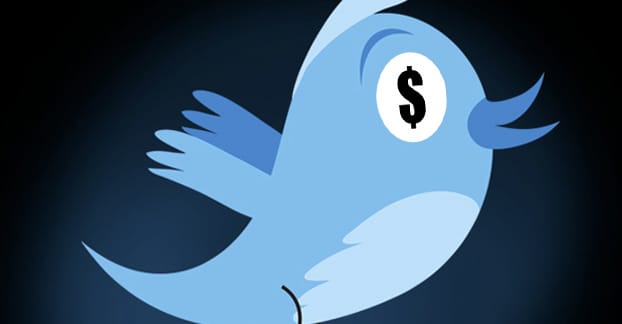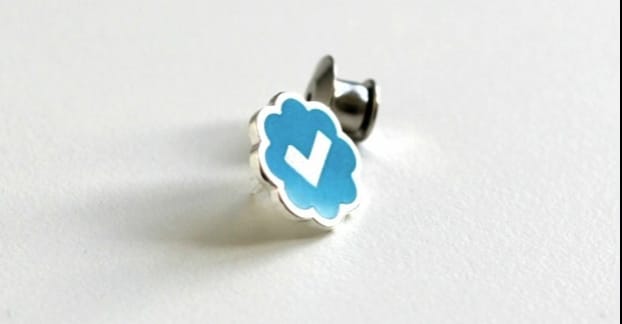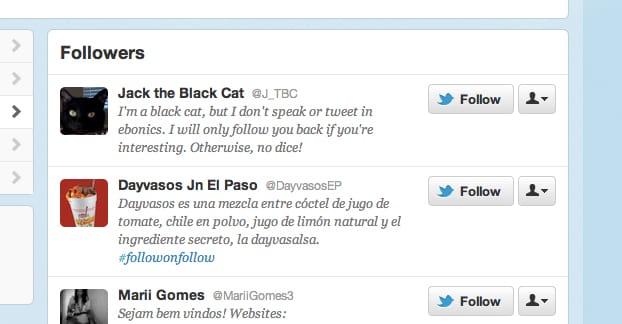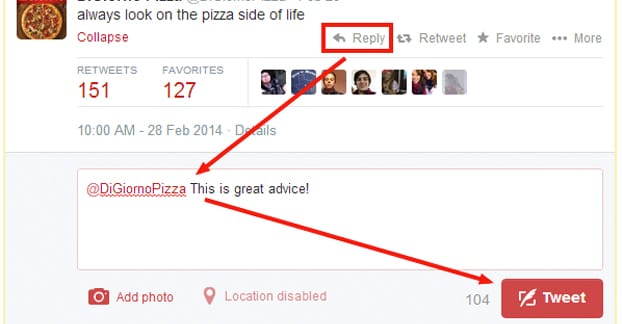There are two different ways to use Twitter for marketing. I’m not talking about using it on a personal basis, to connect with friends, share links, and post what you think is amusing. Rather, I’m talking about two primary objectives for marketing using Twitter as a tool.
The first objective is to build up engagement, follows, and reputation. It is to, in essence, work to become a Twitter influencer. Being an influencer is all about building a brand presence, about building reputation, and about building an audience. However, it’s also something that can be entirely self-contained on Twitter. It doesn’t have to be, of course, and it can in fact help a lot with the second objective, but it stands alone as a goal unto itself if you want it to.
The second objective is to use Twitter as a source of traffic for your site. Leverage the attention of your audience to send people from the social network to your website, where they can do whatever it is you want them to do. You can get them to read blog posts, encourage mailing list signups, refer them to product pages, and extract all the value you can from their presence.
Obviously, you can’t perform the second objective without an audience. You need people to follow you if you want them to click your links and get to your site. That’s why the two objectives are intertwined; they both work best if you’re doing the other too.
So, how can you funnel traffic from Twitter to your website? I figure it breaks down into a few general steps.
Step 1: Build Authority
This first step is all about becoming a prominent figure on Twitter. It’s about becoming someone people should listen to, someone people want to follow. With that authority, you can progress to the next step.
Buff up your Twitter profile. There’s a lot of information you can pack into your profile, but you only have a limited amount of space to do it. It’s generally a good idea to have a unique profile picture, preferably of your face. Your cover photo should be interesting and branded. Include an interesting sentence or two about who you are and what value you bring to Twitter. Add a link to your site and you’re good to go.
@Mention influencers when posting relevant content. Identifying influencers is going to be a crucial step to most of our plans here. It’s always a good idea to know who is most potent on Twitter within your industry. There are the common names, like Rand Fishkin or Neil Patel in SEO, but there are likely going to be many lower-level influencers. These people may have smaller audiences, but they are still potent, and they’re more likely to be willing to network with you. The growth they receive from networking with you is more valuable, user for user, than it is to an industry giant.
Reply to influencer tweets to participate in conversation. When an influencer posts, see if you can turn it into a conversation. Don’t go the basic blog comment route and just thank them for the post – go the whole nine yards and discuss it with them. Generally, an insightful question is the way to go. Just make sure you’re not asking a stupid question or a question that was answered in the post. Asking for clarification is also generally good. Bonus points if you can give them ideas for future follow-up posts.
Retweet when you’re mentioned in a blog post. As a low level marketer – or even a mid-tier marketer – you’re probably paying attention to every link that comes in. Very few of you out there run sites so large that you don’t have the time to track it all.
On Twitter, this means watching for whenever you’re mentioned or linked to in a blog post. When you are, you have two options; you can wait for the site owner to tweet the post and then retweet it, or you can tweet it proactively with a mention. I recommend the second option, because then the influencer will retweet it from your account, further exposing you to their audience.
Avoid the retweet killers. Retweet killers are words that are commonly found in the least retweeted content on the site. It was pulled from Dan Zarella’s study of over 30 million retweets and a comparison database of 2 million additional random tweets. Generally, -ing verbs that indicate you’re doing something will kill it, and anything that’s a sign off or goodnight sort of message also fails. So, too, do uses of slang or improper grammar. You can read more, including the full list, on Dan’s site.
Use the site every day. You can’t be an authority if you’re not around. You’re not some kind of god with omnipotent reach. You need to be more like a king; present to exert your authority.
That means using Twitter on a daily basis more than anything else. What I recommend is using some social media analysis tools to figure out when your users are around the most, and schedule an hour or two per day to catch up and keep up with ongoing Twitter conversations. You can keep them going throughout the day via mobile if they’re important; just remember, your scheduled usage is a minimum, not a cap.
Be more interesting as a user and a person. Neil Patel produced a large guide of tips to using Twitter, and several of them are all about how to be more interesting and relevant as a person. Some of his tips include being bold, posting less often but with more value and insight per post, sharing opinions backed with data, and asking questions. He also recommends the 1/9 rule, which is a scale where out of every 10 posts, only 1 of them is directly marketing.
I have heard a number of different numerical distributions for this rule, but my favorite is the 1/3/6 rule. Out of every 10 posts, make 6 of them industry relevant but not branded; the general tweet. Make 3 of them more relevant to your brand and business, but not hard sell marketing. Finally, make the last 1 your hard sell, the 1 out of Neil’s 1/9.
Step 2: Build Audience
This second step is all about leveraging your authority to grow an audience. Being someone valuable does not, alone, grow your audience. You need to proactively build up a presence and a group of followers so that you can send them to your site in the third step.
Tweet four times at once. This is a distribution block that puts your tweets close enough together to dominate half of a user’s Twitter feed, but leave space for other tweets from other people that user follows. You don’t want to post so much at once that you look like you’re spamming, but you also don’t want to let your tweets go missing. Out of these 4, put your link in one of them. It doesn’t matter which one, though waiting until the fourth one is more likely to get the other three read rather than ignored. Then again, maybe you don’t care if they’re ignored, so long as those people make it to your website.
Figure out how to reach your ideal users. There are two components to this. The first is identifying who your ideal users are. Partly this comes down to knowing your demographics, and partly you can fill in the blanks with competitive research. Figure out who follows industry influencers and who follows competitors, and target those kinds of people.
The second component is timing; learn when your users are active and when you can reach them. Don’t necessarily go just by active hours; go by times of highest engagement and clicks. This is harder to measure, unfortunately, but the boost in engagement if you notice a difference is valuable.
Keep your tweets short. Wishpond did a study for an infographic that showed that tweets under 100 characters were likely to get as much as 21% more engagement than longer tweets. This is a good practice because it also gives users the chance to retweet manually while adding a comment of their own, a new hashtag, or @mentions of other users they think would be interested. It just goes to show that you can make brilliant use of space even within the strict constraints of Twitter’s construct.
Use hashtags to reach more people. Hashtags come in two flavors; branded and generic. Branded tags don’t have broad exposure, because you’re creating them. Generic tags, meanwhile, have other people using them and participating in ongoing conversations.
The only reason you might want to use a branded tag for exposure’s sake is when you’ve been using that specific tag for long enough that people are likely to monitor it. In most cases, though, a generic tag is better. You’ll reach more people and, despite the competition, volume will make up for it.
Of course, nothing stops you from using both if you have the room.
Connect with Twitter amplifiers. Amplifiers are distinct from influencers because they center their activity on Twitter, not on a network of sites where they have built a brand. They can fit into a broad range of niches and it’s rather random where they show up. Your niche might not even have any. If you can find them, though, they can be great to connect with, because they’re much more likely to retweet your messages and they tend to have huge audiences. You can read more on identifying amplifiers here.
Post attractive images on occasion. Twitter is not the most visual of social networks, and in fact they tend to truncate or hide a lot of the larger images you share or videos you post. This can make it hard to attract attention using just images. However, it’s still a good idea to share some form of multimedia occasionally. I like to tweet or retweet interesting industry graphics, or even just funny trending content that I think my users might like.
Ask questions that invite industry comment. I don’t mean ask what color underwear your followers are wearing, that’s kind of creepy. Unless you’re Victoria’s Secret or something. Then you can probably get away with it. Ask questions that are relevant to new changes in your industry. For example, a recent good question for me might have been “What are your thoughts about Twitter removing the tweet count from their buttons?” Ideally, I would get a lot of interesting replies that I can then use to gauge sentiment for a blog post on the subject.
Tweet about trending content, locally and globally. Trends vary in intensity. Some of them are important to small areas but unimportant on a nation scale. Some are national or globally important events. Some trends are just within your industry but don’t have a lot to do with other areas of life.
The trick is to understand your audience and know what kinds of trends matter to them. An online business won’t have local trends to follow, but a local business might. Any business can tweet about global events, but be wary of newsjacking in a way that can get you targeted. I can’t give you more specifics; it will vary from business to business and from trend to trend.
Step 3: Build Awareness
The third step is to get the audience you’ve built to go from Twitter to your site. It’s about setting up a funnel to connect people with value to them, and then transition that value to them into value to you.
Tweet links with interesting quotes or statistics. When you publish a post on your blog, there has to be something interesting in it. If there wasn’t, you wouldn’t be publishing it. Boil down some interesting tidbit, a factoid, a statistic or a concept and tweet that line. It should be interesting enough to hook readers and get them wanting to figure out the context, which entices them to click the link to the longer post. Just don’t bait and switch or try to mislead your readers; they’ll unfollow you for something like that.
Run a contest on your website. Contests aren’t the best way to get traffic and engagement these days. They’ve fallen off a little since everyone started using them. Still, if you have something valuable and brand-relevant to give away, a contest can drag people in, even if they aren’t necessarily really excited about it. Who turns down free stuff, anyways?
Note that I’m not recommending that you run a contest directly on Twitter here. You can if you want, but that’s not going to drive people to your site. By hosting the contest on your site, you can lead people to a landing page where they can learn more about you and further explore.
Promote tweets with links in them. You didn’t think you’d be able to make it all the way through post like this without seeing me mention paid advertising, did you? There’s a reason advertising through PPC is so big after all these years, and that’s because it works. Use Twitter’s built-in promoted tweet features to pay to promote a tweet that has a link in it, which will then help funnel people from Twitter to your site.
Pin a tweet with a link. Pinned tweets are tweets that sit at the top of your feed, so whenever someone visits your profile, they see that tweet first, above all of your more recent tweets. If you pin one that has a link in it, people will click that link. Make sure it’s one of your best tweets, and make sure to rotate it out every couple of weeks. Don’t want to let it go too stale.
Mention influencers in blog posts and tweet the link to them. More influencer outreach here. You’d think they were valuable people to know, eh? This is the opposite of one of the earlier tricks, where you tweet when you’re mentioned. In this case, try to mention influencers in your post, like how I’ve mentioned and linked to Neil Patel in this one. Tweet about it and @mention Neil – or whoever your influencer is – and see what they do. A lot of times, they’ll retweet the link.
Tweet your links more than once. People are afraid of spam, and rightfully so, but that shouldn’t stop you from promoting your blog post more than once. Tweet it when you publish, tweet it again a few hours later, tweet it the next day, and tweet it once or twice in the coming weeks. Every time you tweet it you’re probably going to reach an entirely new audience.







